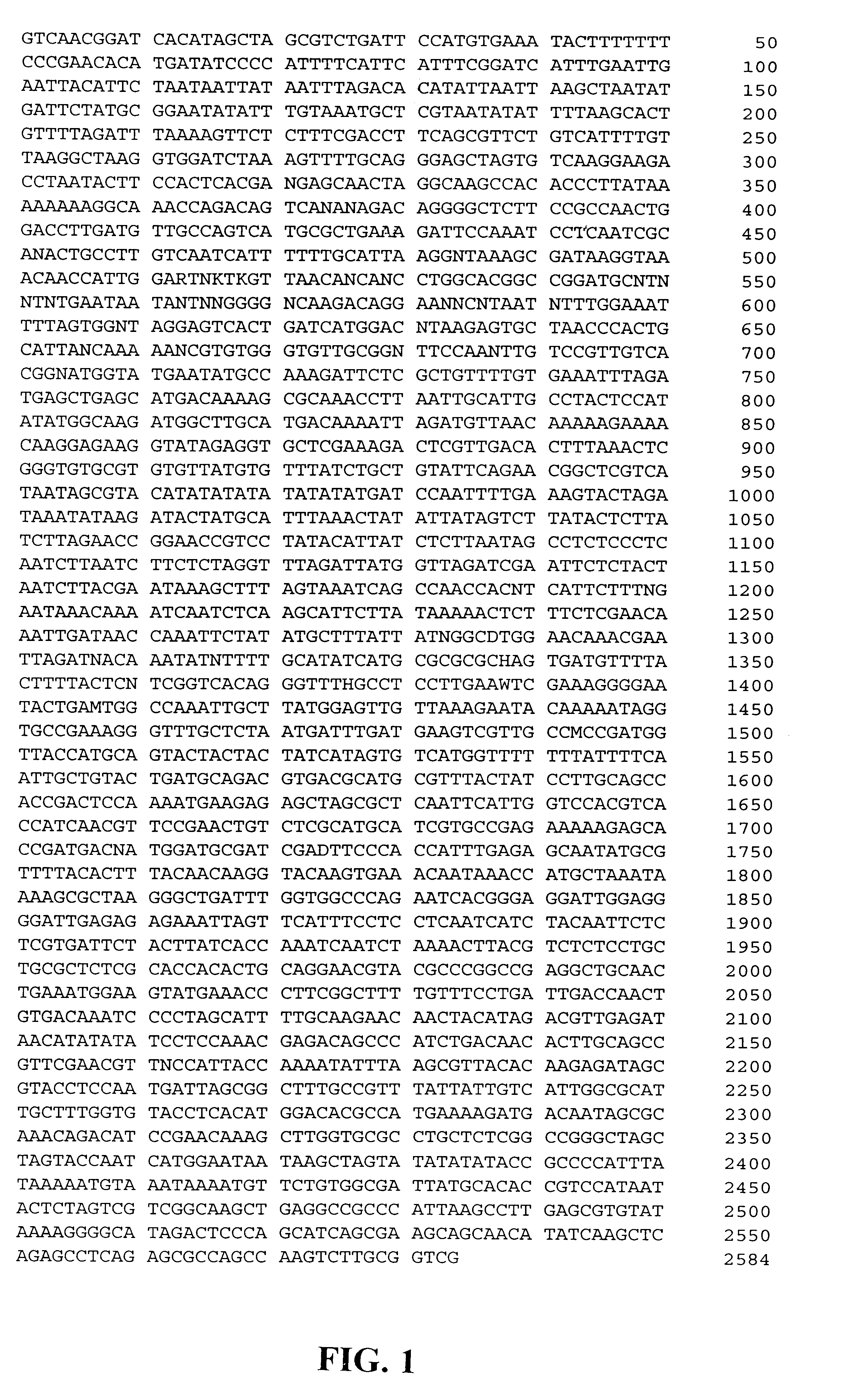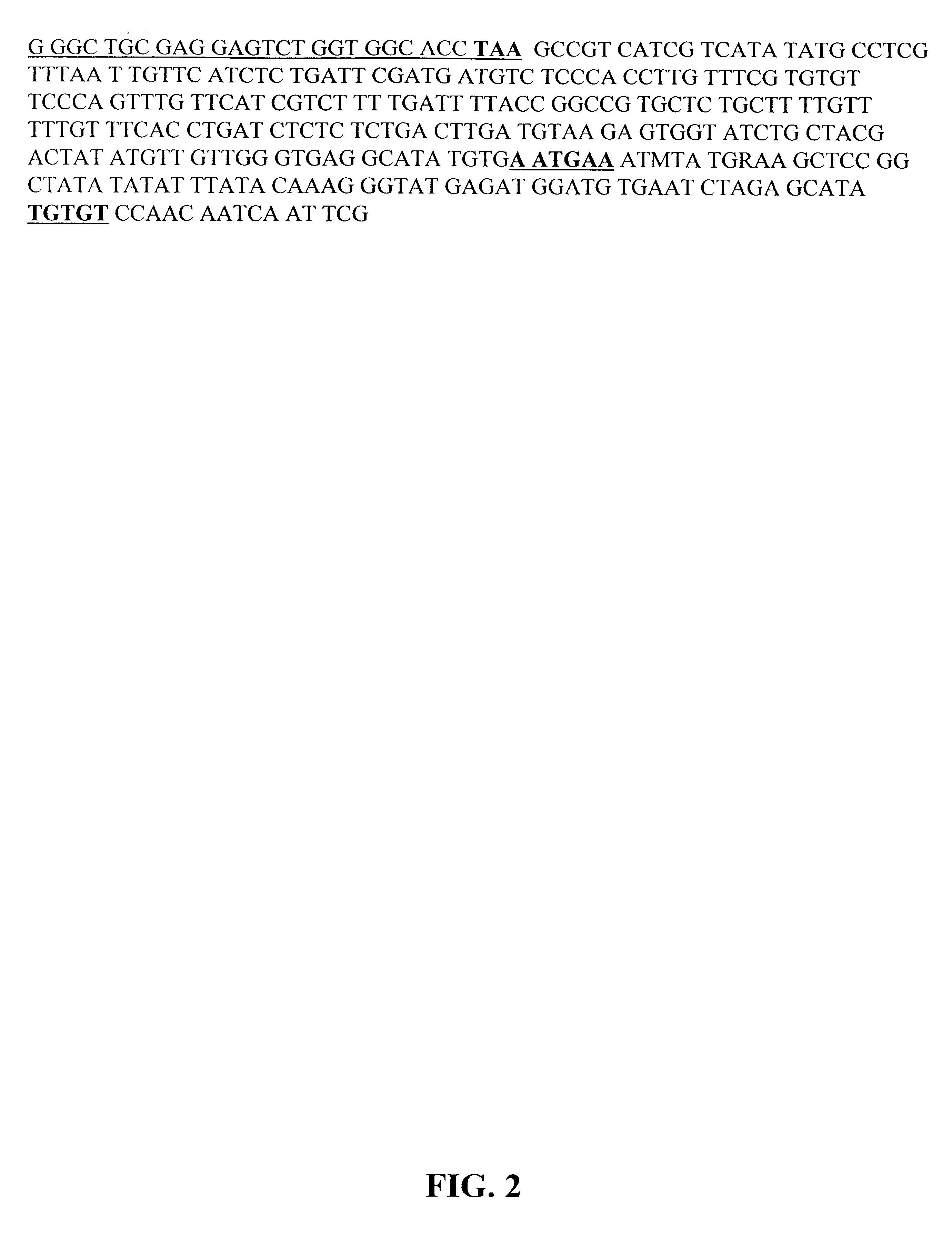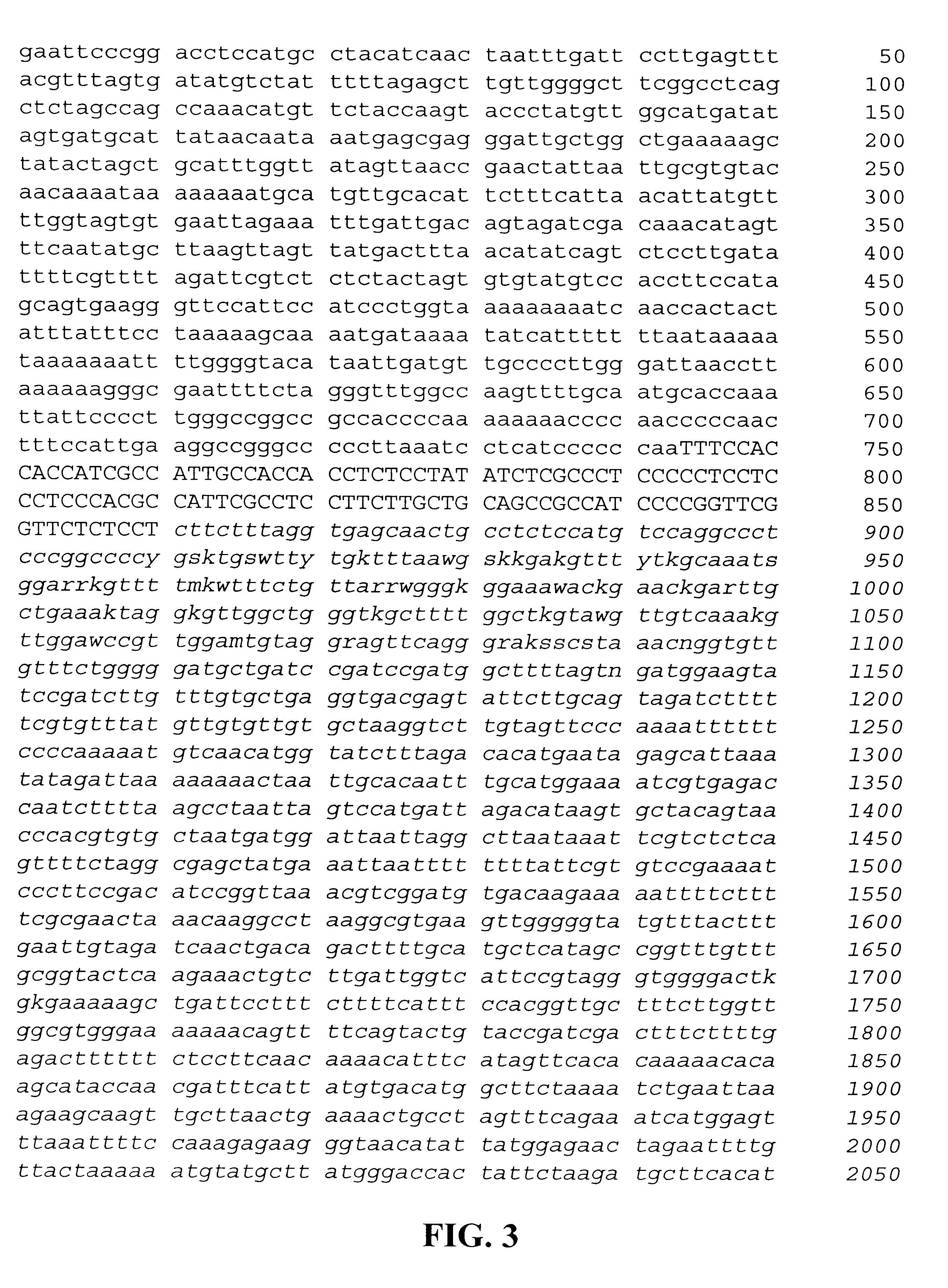Maize RS81 promoter and methods for use thereof
a promoter and promoter technology, applied in the field of transgene expression, can solve the problems of many regulatory regions failing to demonstrate suitable or desirable expression profiles for transgenes, reducing the nutritional quality of their diet, and many previously identified regulatory sequences failing to provide the expression levels required to fully realiz
- Summary
- Abstract
- Description
- Claims
- Application Information
AI Technical Summary
Problems solved by technology
Method used
Image
Examples
example 2
Cloning of the Rice Actin 2 Intron
Two plasmid clones (pUC-RAc2 and pUC-RAc4) containing genomic DNA sequences of the rice actin 2 gene (Act2) were isolated as described in Reece et al., 1990. Restriction maps were generated for each clone, which consisted of an EcoRI restriction fragment from rice genomic DNA cloned in pUC13. The location of the region 5' of the translation start codon for in each of these clones was determined by comparing their restriction maps with those determined by sequence analysis of the pUC-Rac2 coding region (Reece et al., 1990). Restriction mapping and preliminary sequence analysis indicated that the pUC-Rac4 genomic clone was identical to, but 1.2 kb longer than, that of the pUC-Rac2 clone.
Sequence characterization was carried out to determine the length and structure of the 5' region in pUC-RAc2 and pUC-RAc4 by the dideoxy chain termination method using a Perkin-Elmer ABI377 automated sequencing machine. The sequence analysis of pUC-RAc4 revealed that t...
example 3
Construction of RS81 Promoter-gus-nos, RS81 Promoter-Intron-gus-nos and RS81 Promoter-Intron-gus-nos Fusion Vectors
Restriction enzyme analysis and Southern blot analysis of the lambda clone indicated that the RS81 promoter region was located on an approximately 4000 bp SalI gDNA fragment. The SalI fragment was cloned into pUC19. The bases around the ATG start of the coding region were PCR.TM. modified to an NcoI restriction site to accommodate fusing the promoter to the gus gene. The PCR.TM. fragment contains a HindIII site 5' of the NcoI site. The promoter was then fused to the gus gene in plasmid vector pUC19 in three steps. First, the PCR.TM. generated NcoI-HindIII 3' end of the promoter was ligated to the NcoI-HindIII site of the gus-nos terminator containing plasmid vector, pGN73. Second, the promoter region-gus-nos fragment was isolated as a HindIII-EcoRI fragment and ligated with the HindIII-PstI fragment (the mid promoter region) into the PstI-EcoRI site of plasmid vector pU...
example 4
Expression Analysis of Transformation Constructs in Transgenic Cells
Transient expression assays were performed as described by Jefferson (1987). Histochemical staining and fluorometric analysis for expression of the GUS reporter gene (E coli .beta.-glucuronidase), fused to the RS81 promoter, was performed using 1.times.6 (716) callus suspension cells and excised maize root and leaf tissue. Equal molar concentrations of plasmid DNA were precipitated onto 0.6 micron gold particles and introduced into the tissues by microprojectile bombardment. For the histochemical staining, bombarded tissues were incubated for approximately 40 h at 24.degree. C., followed by incubation in buffered solution containing 5-bromo-4-chloro-3-indolyl .beta.-D-glucuronide (X-GLUC), overnight at 37.degree. C. Comparison of expression levels from the RS81 promoter-reporter gene constructs, to levels from the Actin 1 promoter-Actin 1 intron-reporter gene construct, were visually assessed. For the fluorometric a...
PUM
| Property | Measurement | Unit |
|---|---|---|
| distance | aaaaa | aaaaa |
| flight path length | aaaaa | aaaaa |
| pressure | aaaaa | aaaaa |
Abstract
Description
Claims
Application Information
 Login to View More
Login to View More - R&D
- Intellectual Property
- Life Sciences
- Materials
- Tech Scout
- Unparalleled Data Quality
- Higher Quality Content
- 60% Fewer Hallucinations
Browse by: Latest US Patents, China's latest patents, Technical Efficacy Thesaurus, Application Domain, Technology Topic, Popular Technical Reports.
© 2025 PatSnap. All rights reserved.Legal|Privacy policy|Modern Slavery Act Transparency Statement|Sitemap|About US| Contact US: help@patsnap.com



